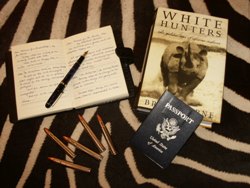

 The Accurate Reloading Forums
The Accurate Reloading Forums  THE ACCURATE RELOADING.COM FORUMS
THE ACCURATE RELOADING.COM FORUMS  Hunting
Hunting  Hunting Reports - Africa
Hunting Reports - Africa  Hunting the Seychelles
Hunting the SeychellesGo  | New  | Find  | Notify  | Tools  | Reply  |  |
| One of Us |
Well, the Seychelles is a part of Africa and therefore this hunt report ends up here. And this trip was plain work and not recreational hunting, but anyway I thought that I could share some impressions. With the gun laws of the Seychelles, not many have hunted there. I am a conservation biologist specialized in eradication of invasive predator species and my everyday work is as a project leader for a national eradication project for the invasive Raccoon Dog (Nyctereutes procyonoides) here in Sweden.  I have been working with raccoon dogs for 10 years now and we have reached very good results, the population is now very low and restricted to the areas bordering the source population in Finland. So when IUCN,s Invasive Species Specialist Group requested a hunter to tackle the task of removing an invasive bird population on a remote island in the Seychelles nation I thought it would be interesting to work with something other than invasive mammalian predators for some months.  The Indian or Common Myna (Acridotheres tristis) was introduced to the Seychelles about 100 years ago to control grasshoppers in agricultural areas. As usual with introduction of nonnative biocontrol agent species, without prior evaluation, the myna bird quickly developed into an invasive species. The Indian Myna is today one of the most invasive species in the world, one of only three bird species in the IUCN,s list of the 100 worst invasive species of the world. It is a notorious nest predator on other birds and competes with native species for food and nesting places. The myna is size wise similar to a jackdaw. 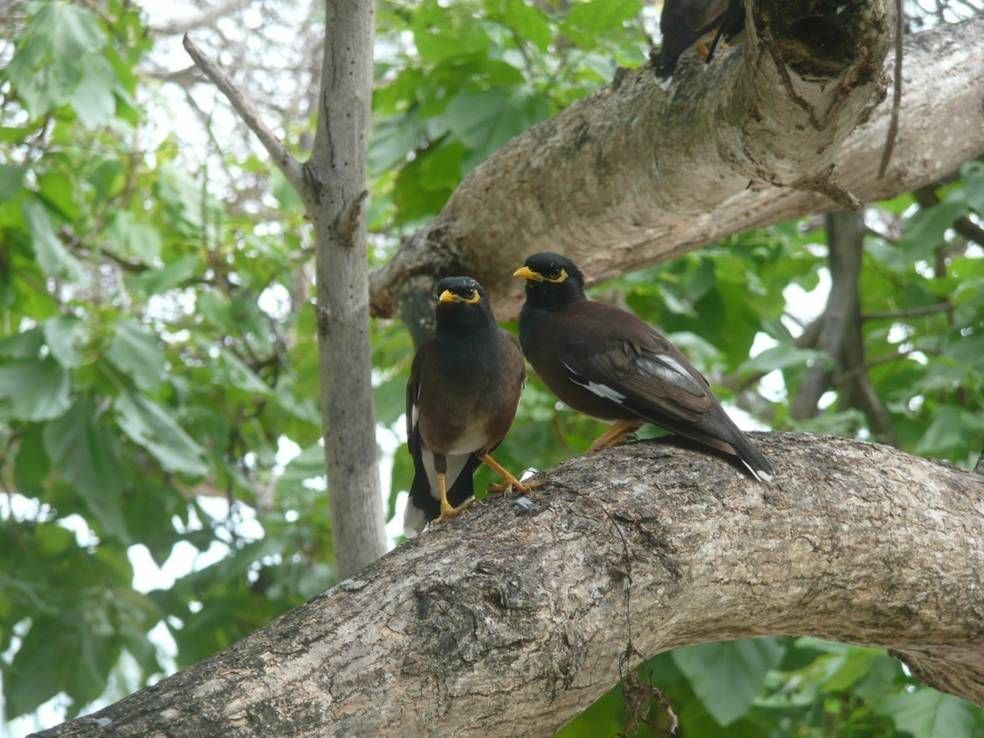 On Denis Island the Green Island Foundation (GIF, greenislandsfoundation.blogspot.com) had been trapping mynas for two years, catching about 1200 mynas. 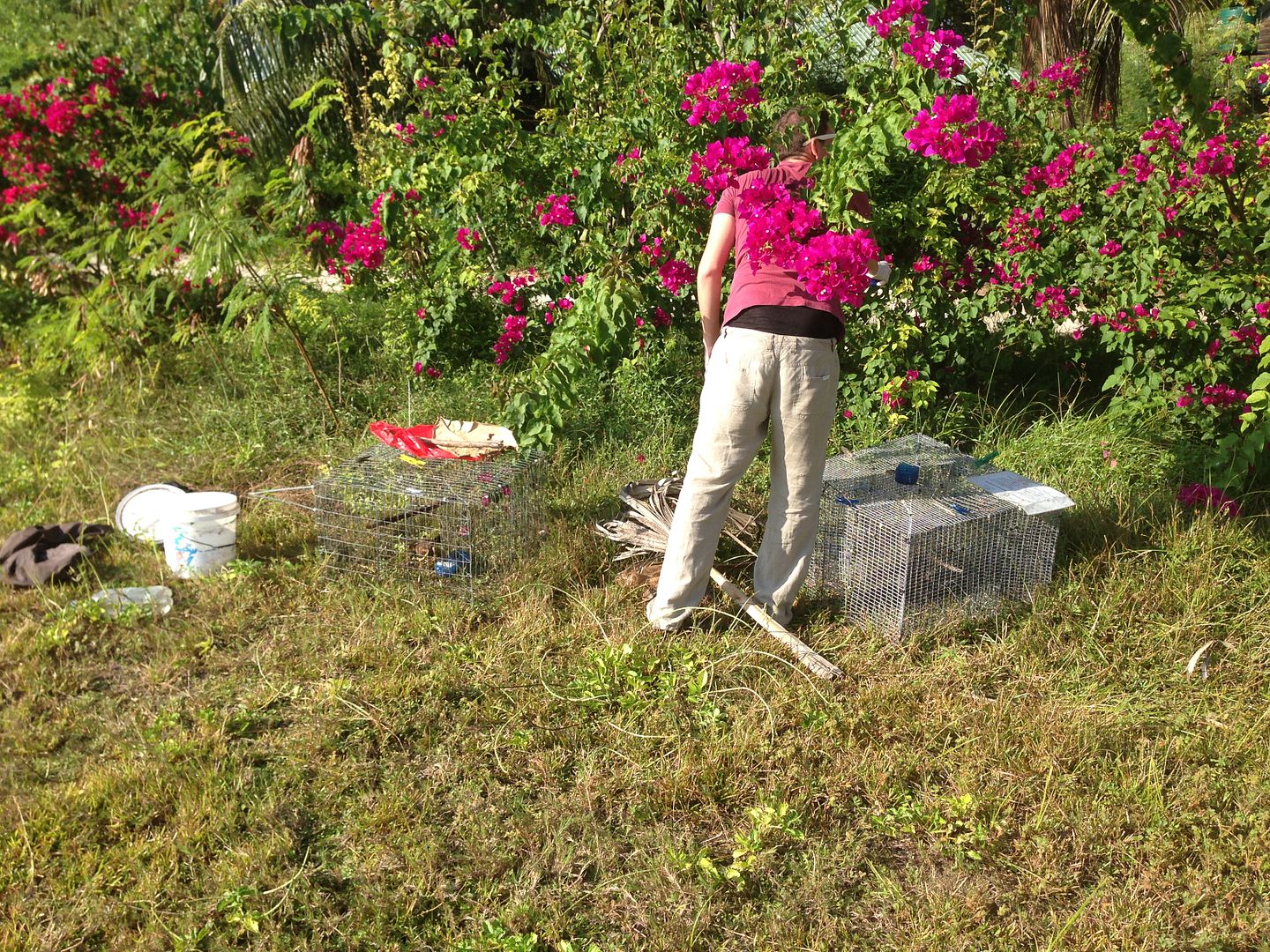 On this island the myna bird is a direct threat to native species such as the Seychelles Magpie Robin, the Seychelles Paradise Flycatcher and the Seychelles Warbler. But as always, trapping will not catch all individuals in an area and there will always be a small fraction of trap shy individuals remaining. Poisoning of the last birds was not an option due to the risk for the endangered native species on the island. Therefore they needed a marksman to take out the rest of the population. GIF estimated the remaining population to be numbered about 20-30 individuals. Denis Island 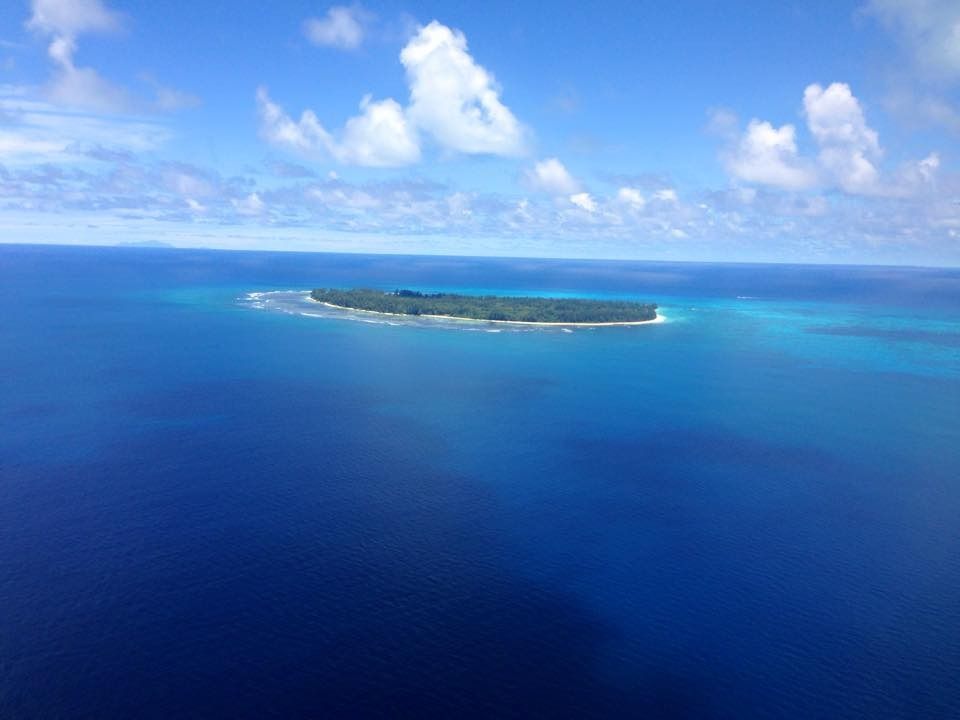 After some quite impressive efforts of GIF in national administration I was granted import licenses of no less than 4 different guns and could pack my stuff in February to leave for the Seychelles. I had just finished my moose hunting season and the cold north would be exchanged to the hot Seychelles 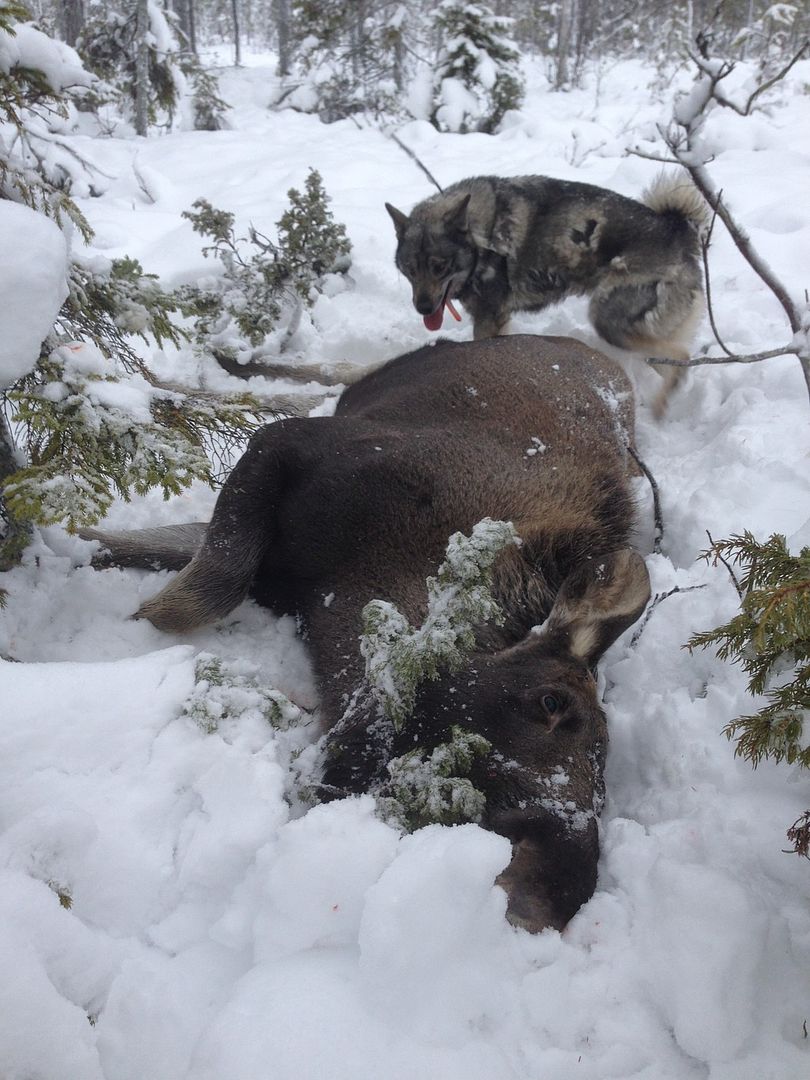  I have traveled with guns in many parts of the world with different experiences, but this nation really broke the record of strange gun laws. Everywhere I moved with guns on the main island I had both military and police escort, quite some difference from where I live here in the north of Sweden where almost everybody owns a gun. Here I was the only one carrying guns… To tackle the challenge of eradicating a bird species that is among conservation biologists considered impossible to eradicate due to its response of gun shyness when shot at I brought 4 different guns. One .22 with a silencer, a 12 gauge shotgun, a high power sniper gun (6,5X55 equipped with a silencer) and a very good air rifle. I used the air rifle to teach the conservation staff in shooting and did leave the rifle on the island in the case of a new invading myna bird. 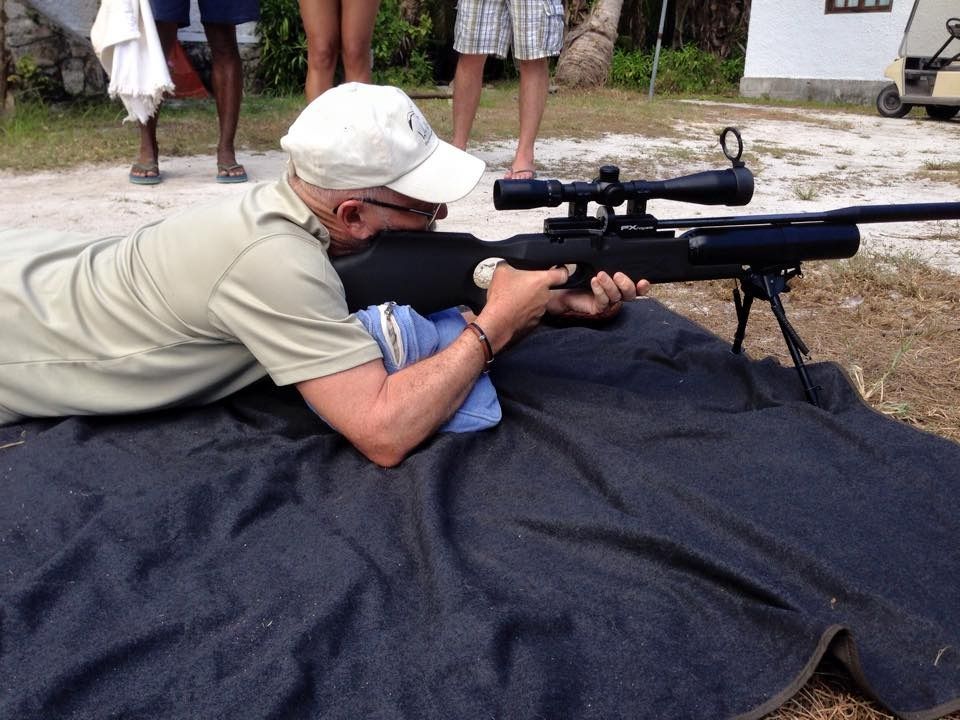 The first week on the island I spent mostly observing the target species, shooting only some odd birds encountered by chance. During this time I made the plans for the coming work. I did build a system of blinds and bait stations. The myna bird is not so interested in baits, but if you make a bait that attracts other birds the myna birds will put a lot of efforts into prohibit other birds from eating on the bait.  blind When my plans for the coming work were made I started the shooting. I did take out a number of birds from blinds close to roosting trees, evenings and mornings. Some birds were also killed from blinds connected to baits, especially the bait outside of my house. 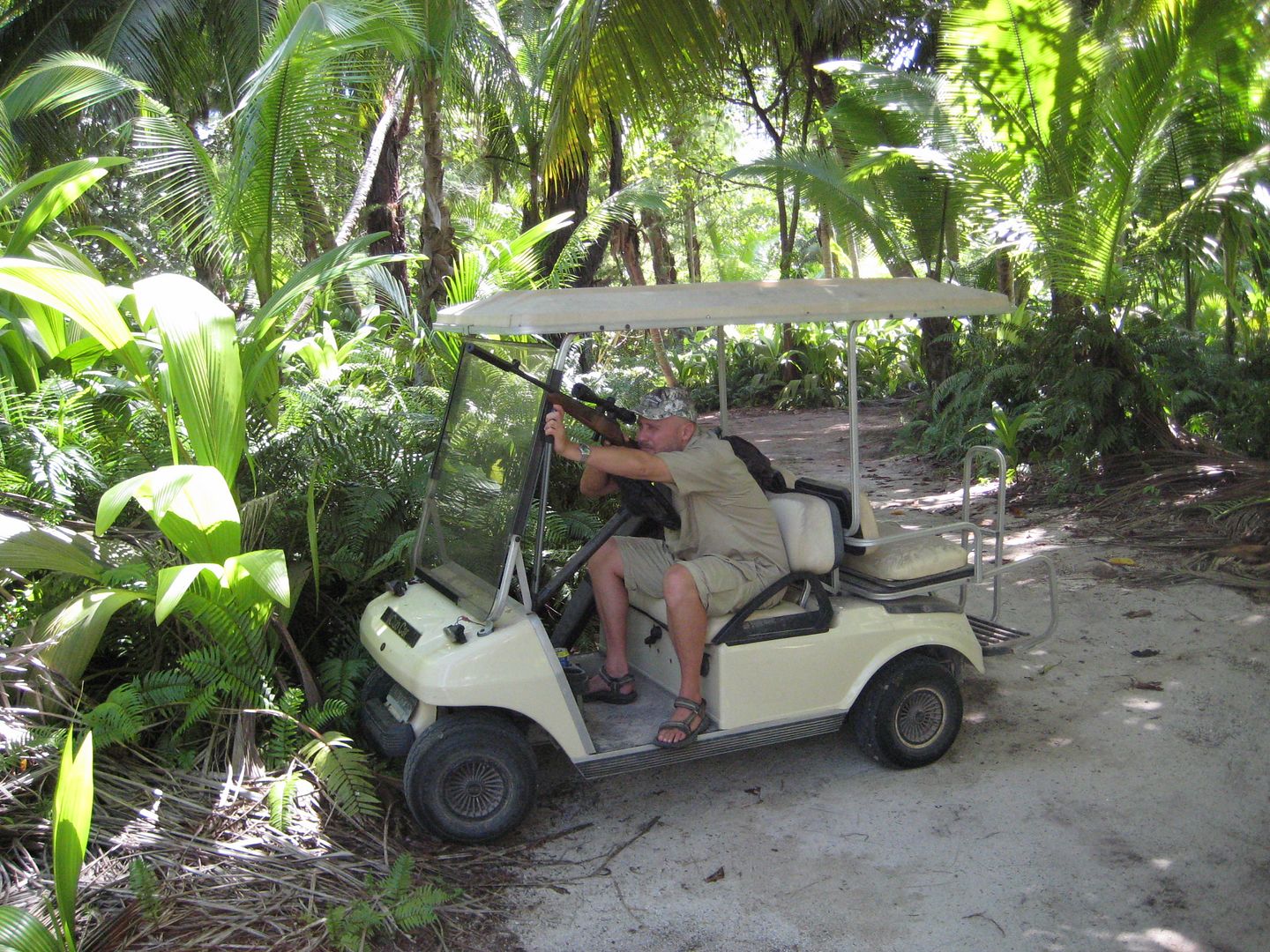 Most of the birds were killed from a club car by “diesel stalking”, that was my foremost effective management tool. But calling with bird distress sounds was also an efficient way of luring mynas into shootable situations. 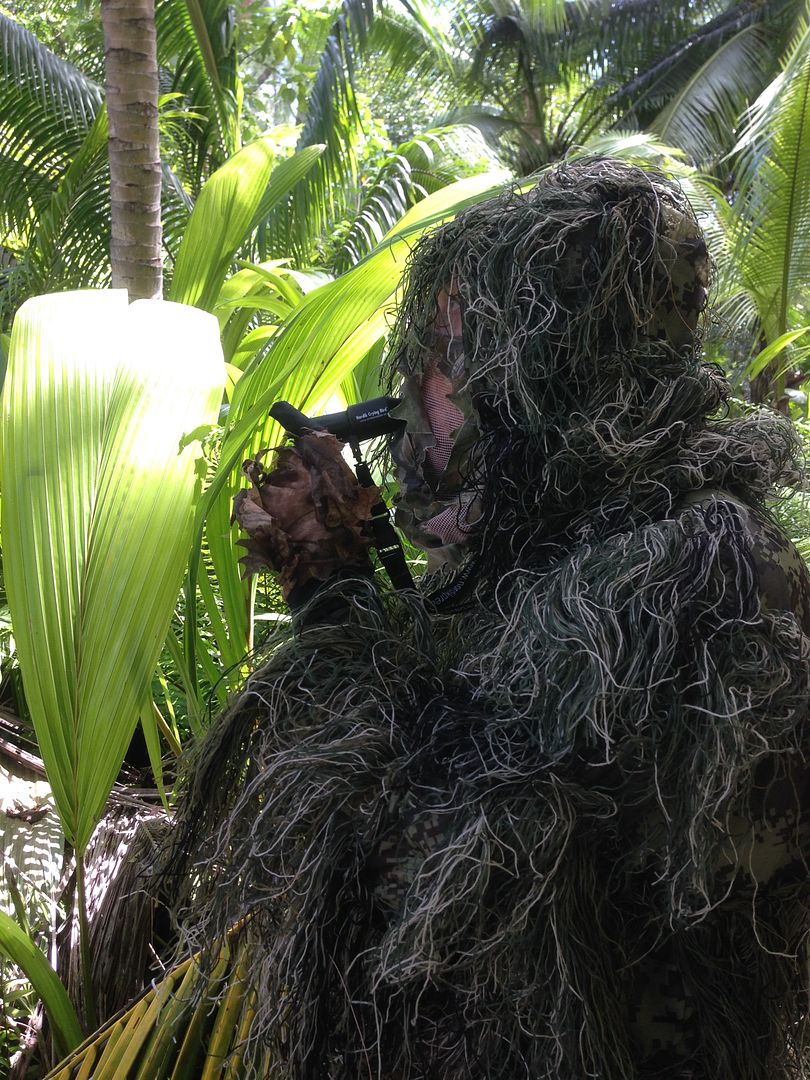  After two weeks I had shot more than 30 birds out of a population that was estimated to be about 20-30 individuals. This was of course a big surprise for the people that had made the estimate. I am very interested in birdwatching and it came as a surprise for me when I spotted a European Starling on the island. When I reported it it was clear that this was the first ever to be observed in the Seychelles. 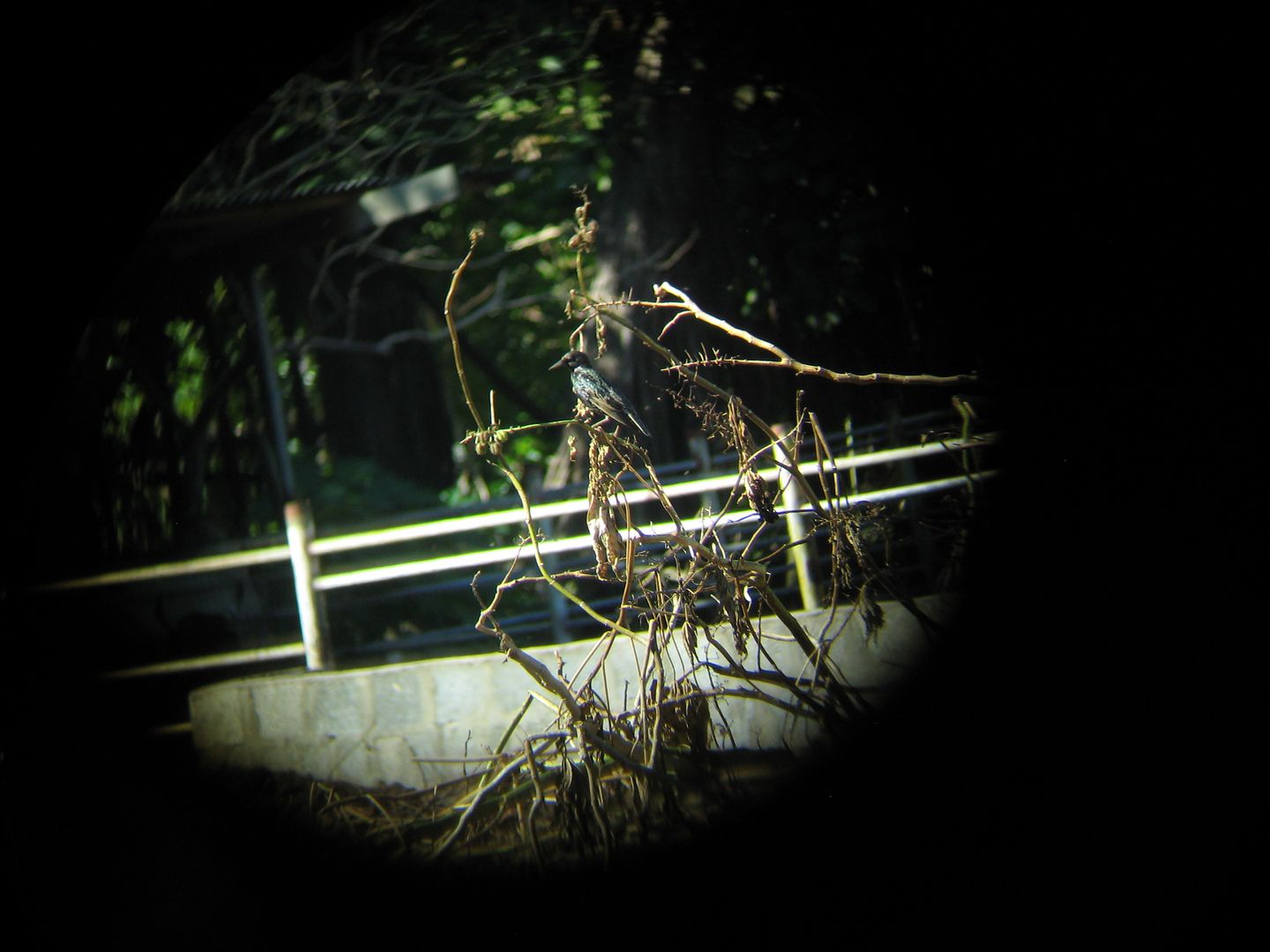 After 4 weeks of intensive hunting with many different methods I had killed 65 birds, the last five were taken out with “drive by shooting” from my club car and stalking of vocal birds in evenings. This was even more surprising considering the previous estimate of 20-30 birds… Now I was quite confident that I had killed the last bird on the island and was ready for some time of after one months work with not a day of. This coincided well with the planed visit from my family and I had a fantastic time for two weeks with my wife and sons. I can recommend Denis Island for everybody that has an interest for snorkeling. We was in the water everyday and my sons really loved the frequently sightings of sharks, turtles and lion fish. Just amazing snorkeling in pristine waters, stuff that I hadn't had time to do during my work. 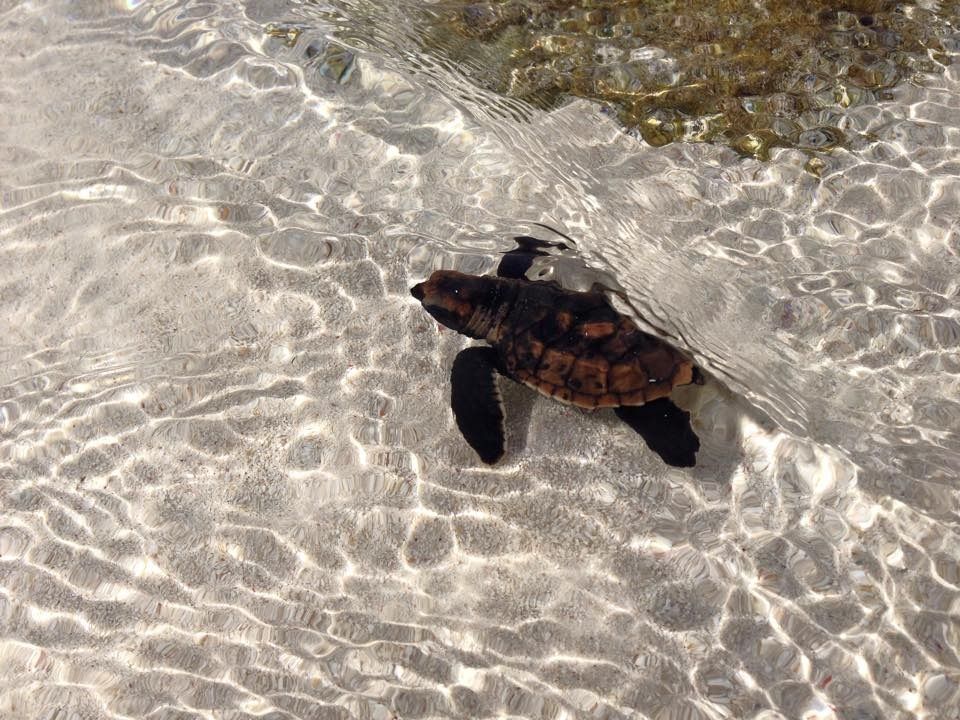 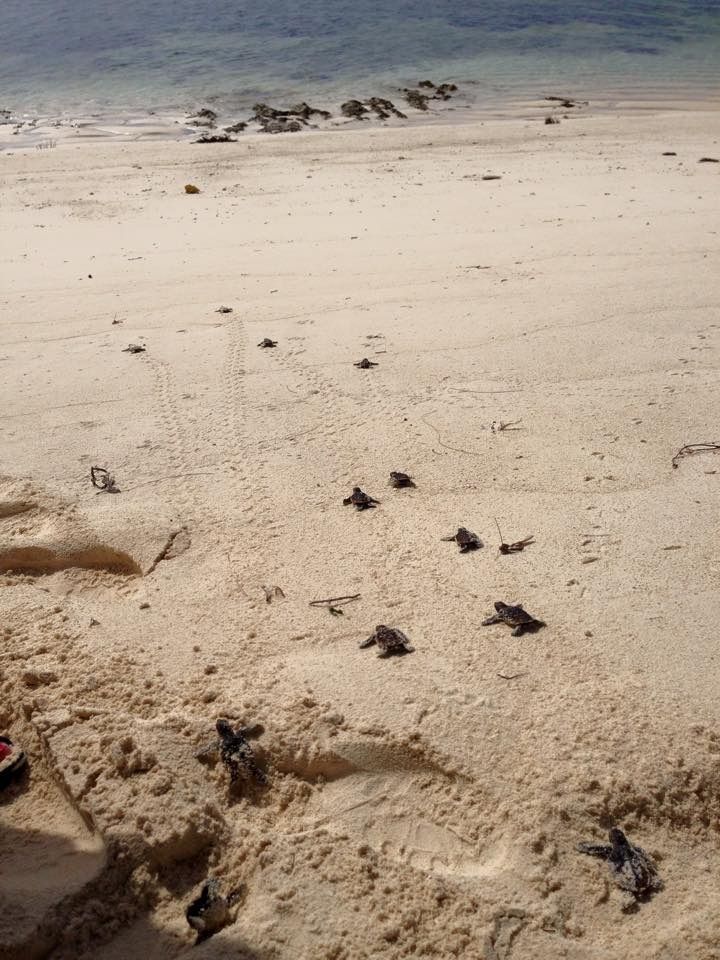 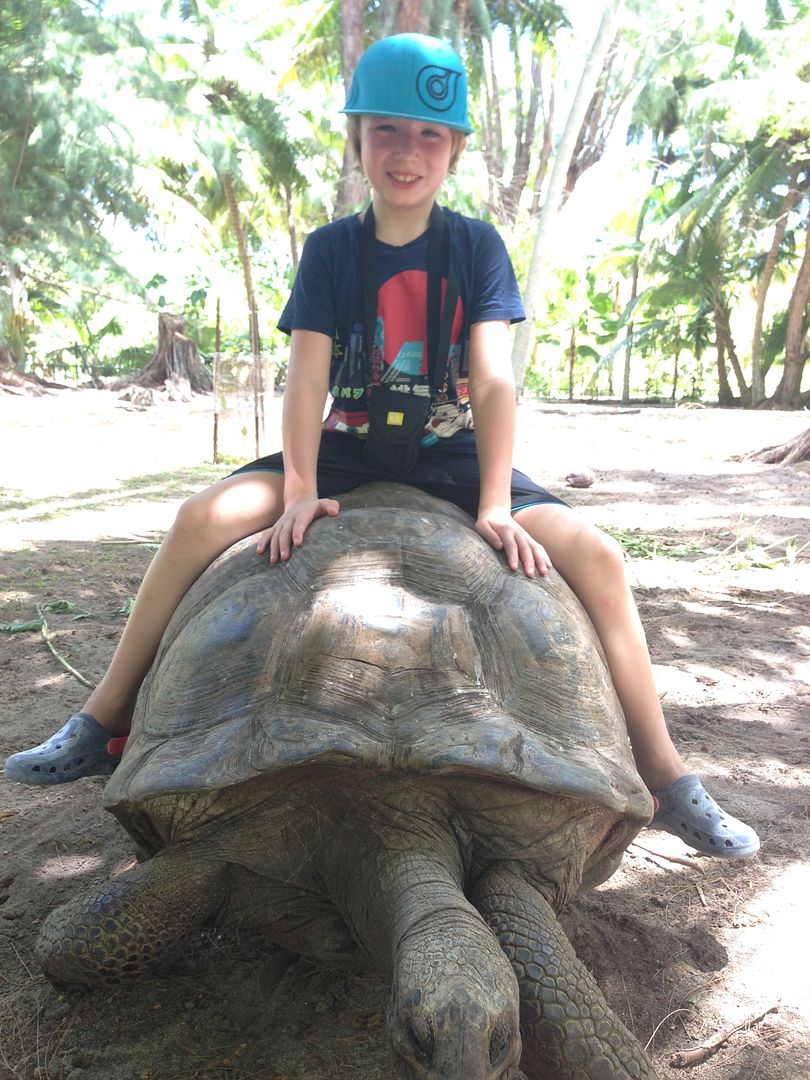  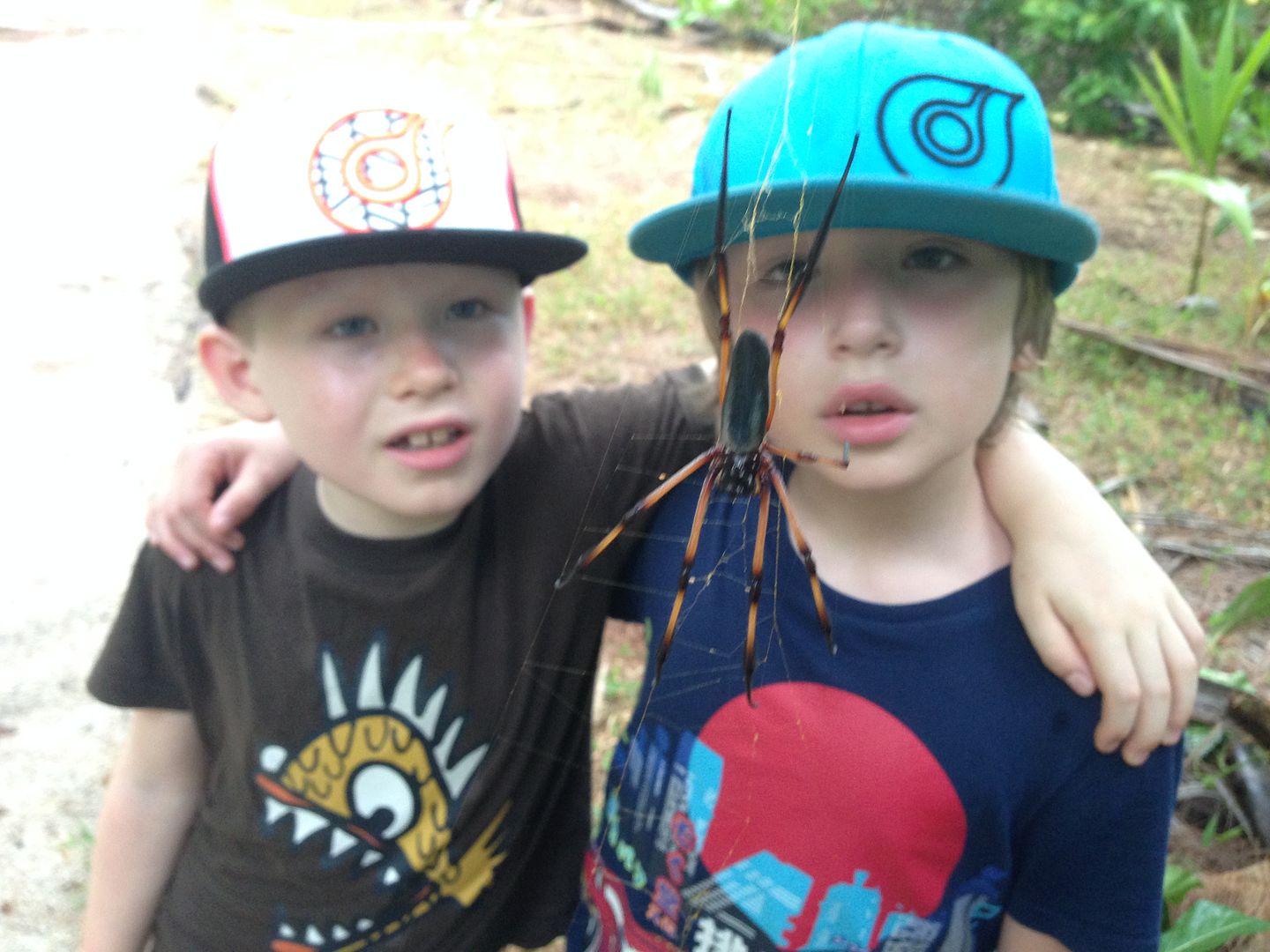  After two weeks the family left and I did continue the work. The rest of the work was without results, no more mynas were there to be seen or heard. After one more month we considered the island myna free and I prepared to leave for Sweden. Before I left I treated myself to a half day of big game fishing, great fun!  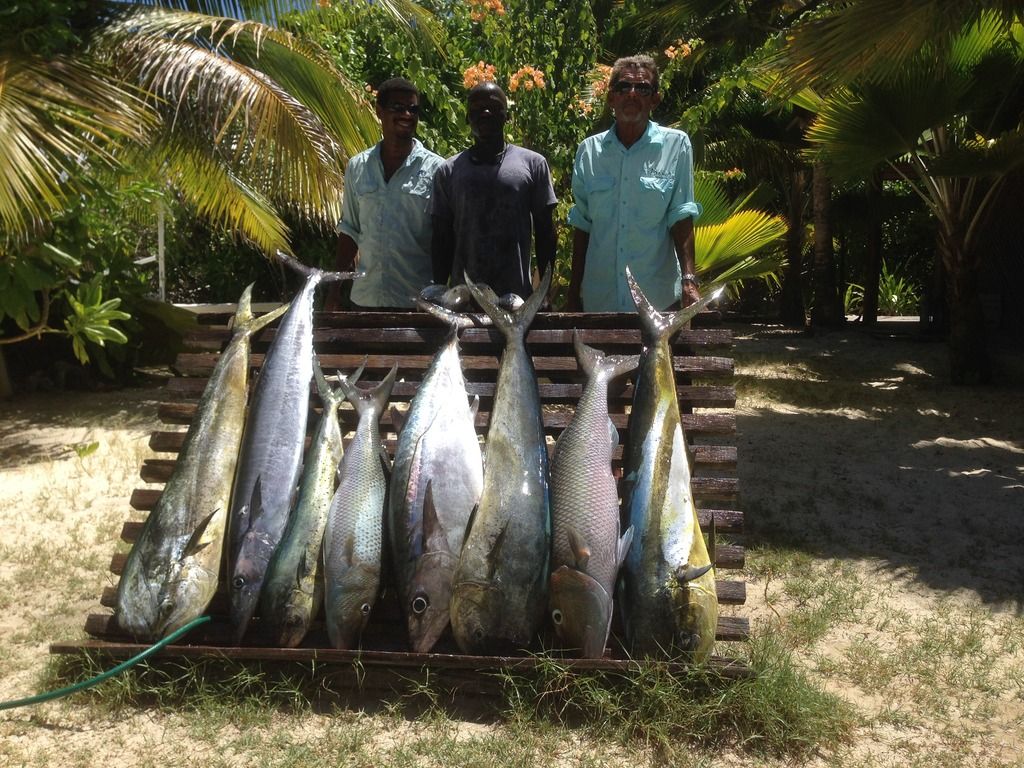 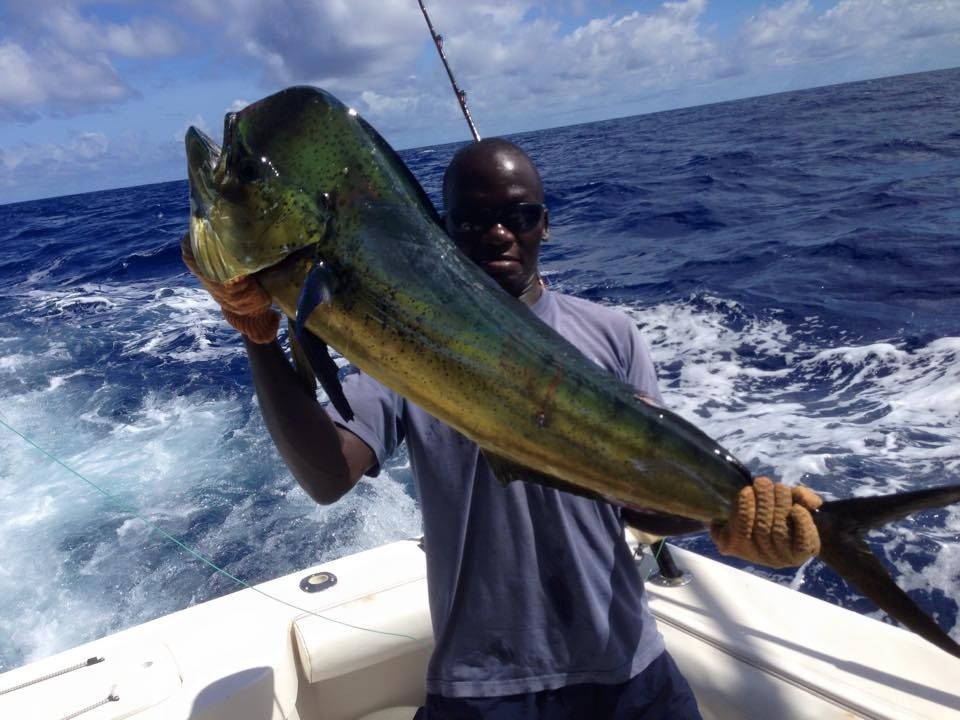 Leaving the Seychelles with guns was more difficult than entering. My escort of both police and military people did there best to help me leave the country but the airport staff was not used to handle guns. Anyway, after hours of administrative efforts I was able to leave the country.  Back in Sweden I followed the monitoring work made by the conservation staff on the island with great interest. No mynas observed in months. GIF made a press release on the successful eradication after four months and did send it to the papers. Just some hours after they did send in the press release a myna bird was observed on Denis and the press release was retracted. The bird showed by the ring bands to be one of the escaped decoy birds. I did shoot 5 former escapees that were equipped with ring bands showing that they have escaped from the traps. Decoy birds are wing clipped to prohibit them from flying if they escape. Now we know that a myna bird in “flightless mode” due to wing clipping is not vocal. There is no way that I would have missed a singing myna during my almost 3 months on the island. After moulting the birds can fly again and this bird surfaced and started to sing and fly about again after the feathers had grown out, impressing individual that survived more than 3 months in flightless mode…  After some serious shooting practice and some Skype meetings with myna shooting tactics we considered the conservation officer ready for the task. He did kill this escapee directly, very good work of a person that have no previous experience of hunting. 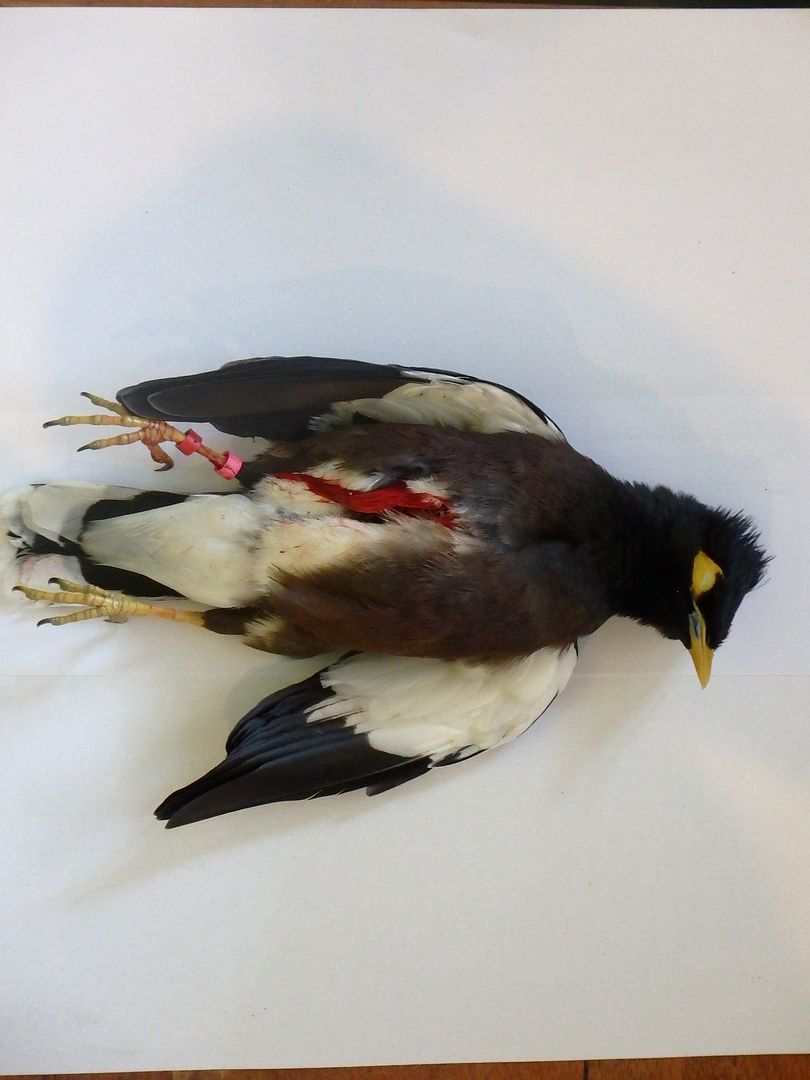 Now Denis Island is considered a myna free island. This will be a major conservation advantage for the endemic bird species that lives there. GIF is now trying to raise funds to do another myna eradication on North Island. If that is successful they will translocate threatened endemic bird species to that island. But as always in countries like this, conservation work is dependent on donations. I hope that GIF can gather enough donations to start the myna eradications on North Island, that would be another major conservation milestone and a victory for the future generations of endangered endemic fauna. When the Seychelles Magpie Robin population was at the lowest point it was only 16 birds left in total. Today after eradication of cats, rats and now mynas they number in hundreds. Here a youtube clip about the eradication made by GIF https://youtu.be/MFAXJDyWIBs Some miscellaneous pictures  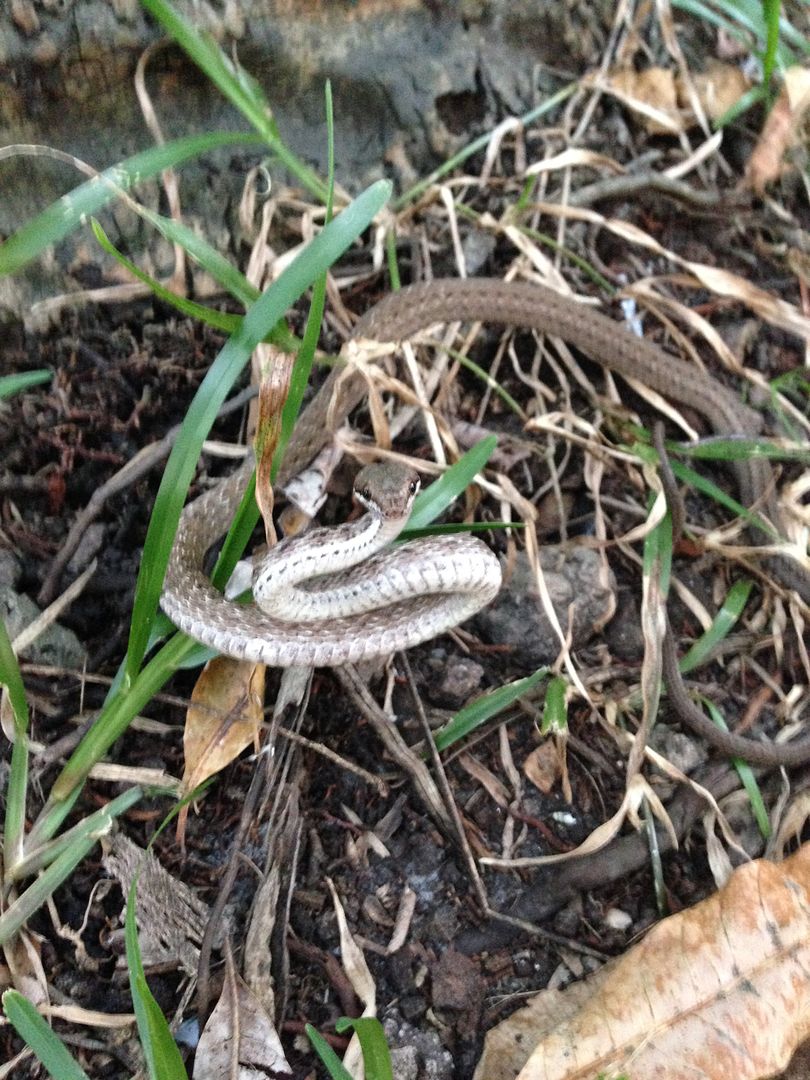 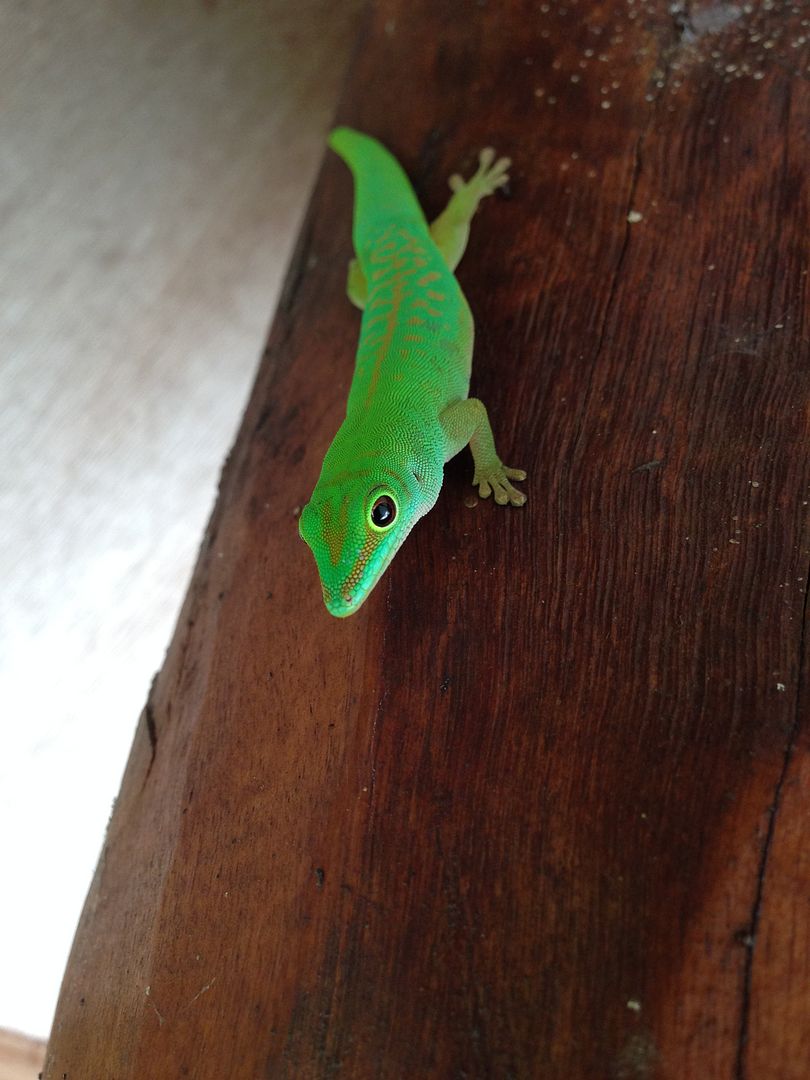 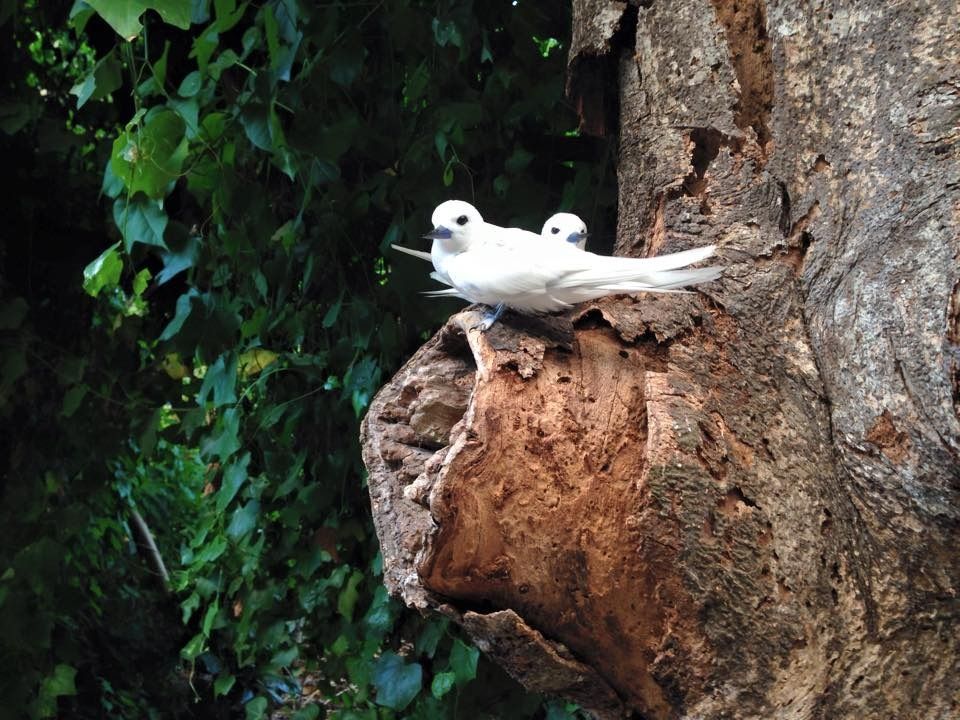 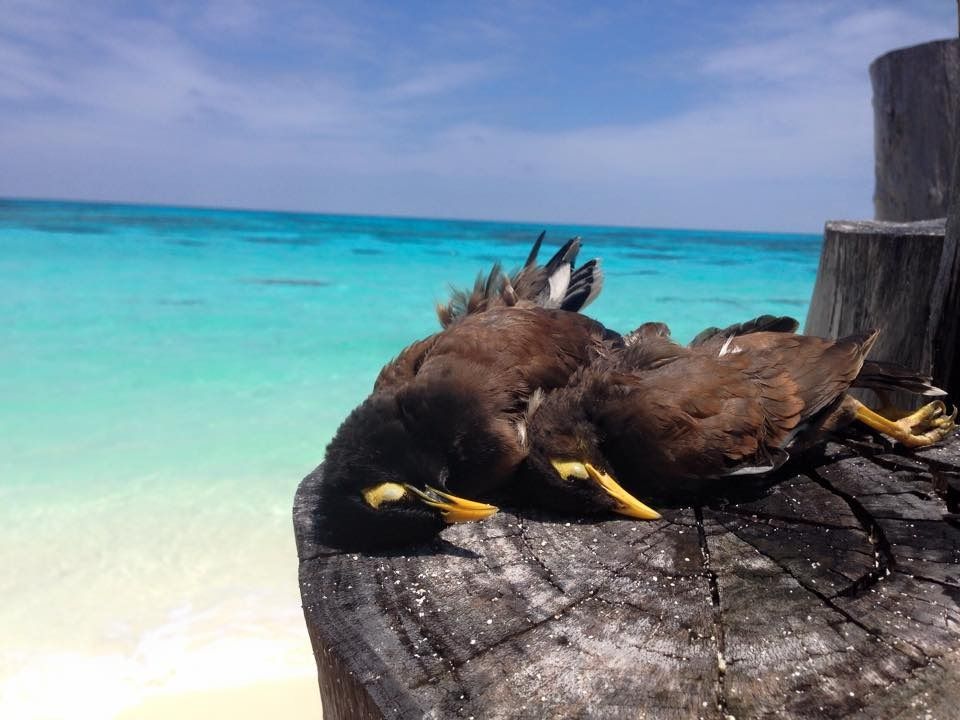 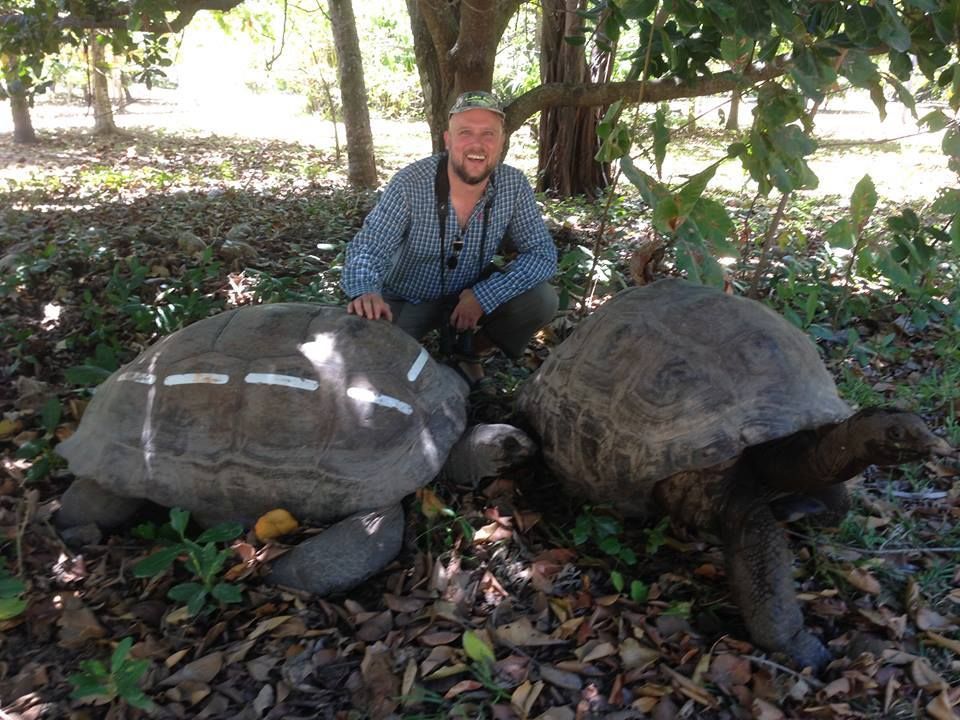  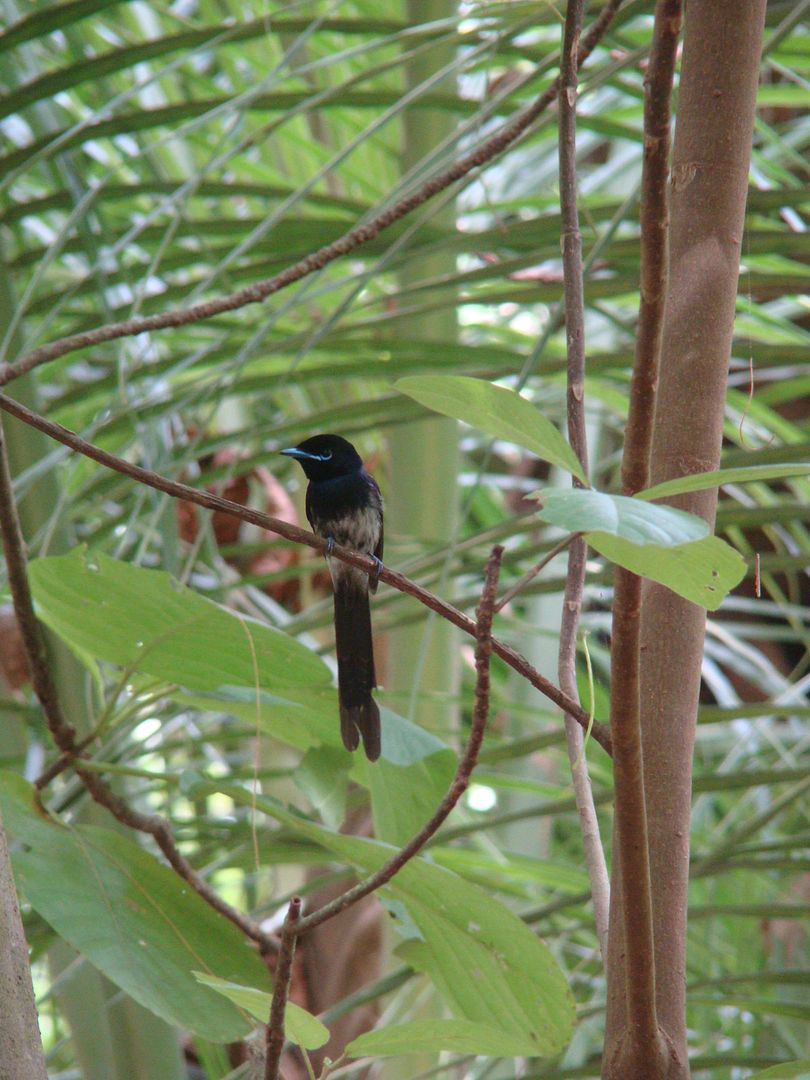 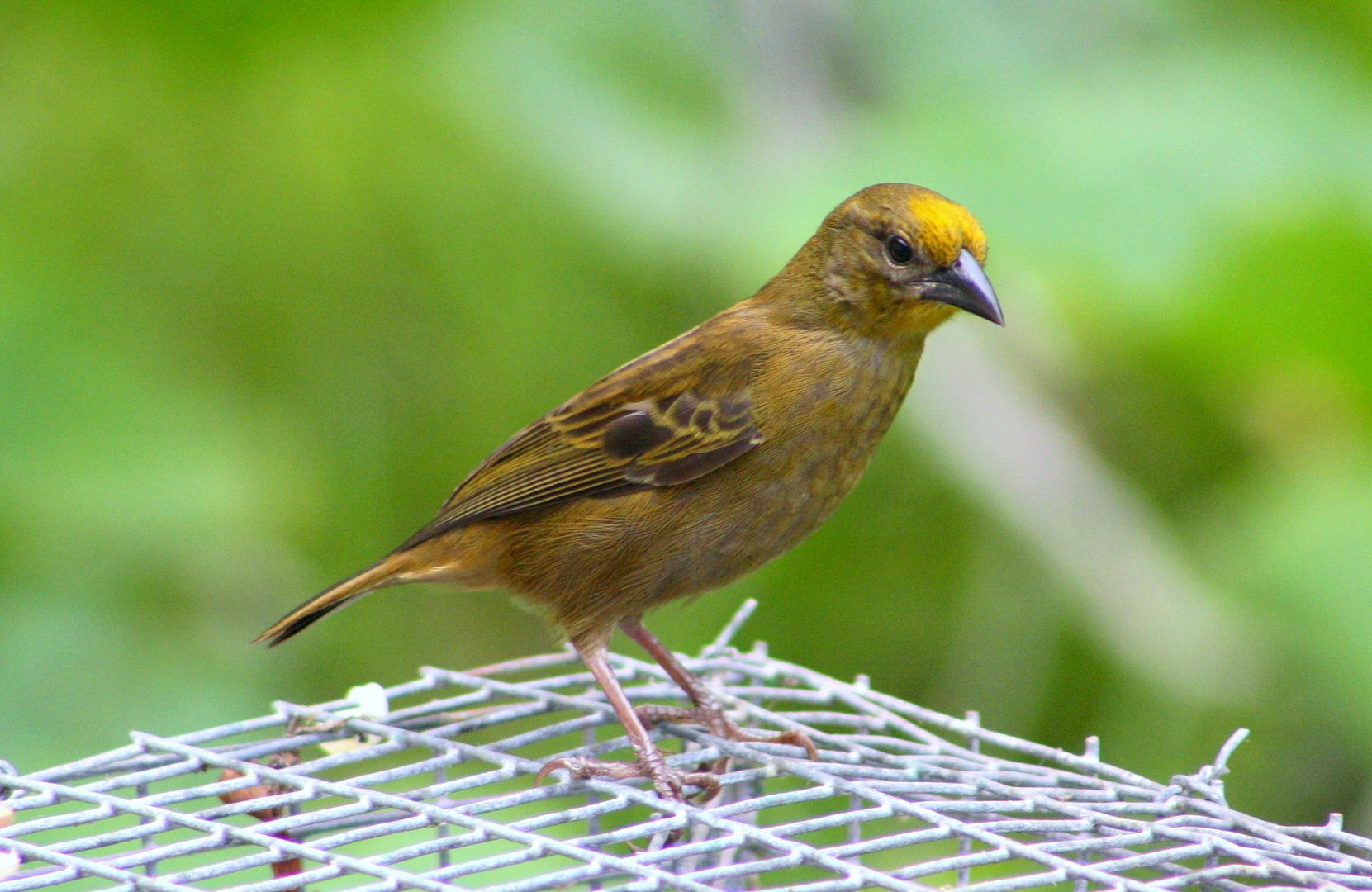  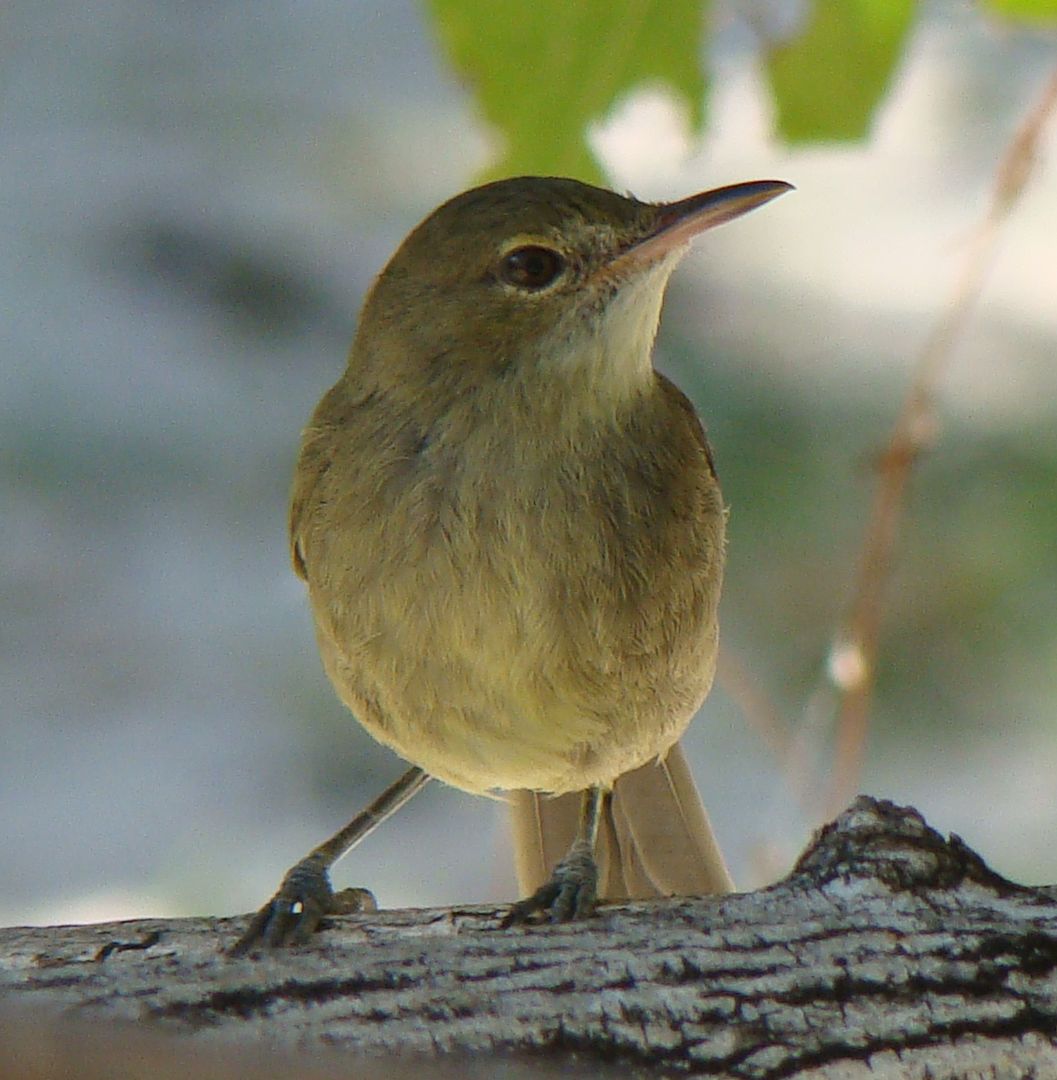 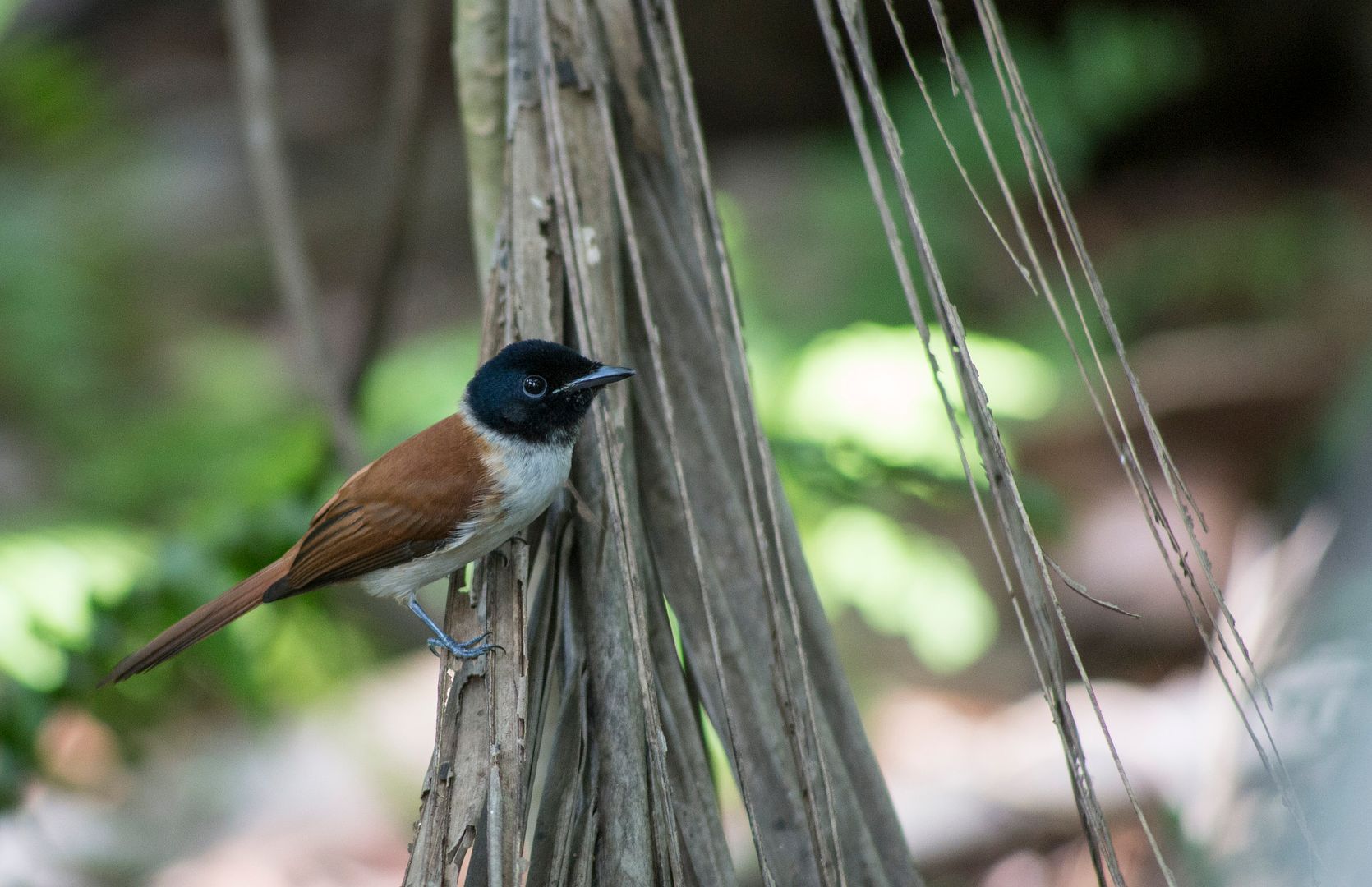 | ||
|
| One of Us |
Neat report! Interesting work you do. | |||
|
| one of us |
Very interesting, beautiful place. Frank "I don't know what there is about buffalo that frightens me so.....He looks like he hates you personally. He looks like you owe him money." - Robert Ruark, Horn of the Hunter, 1953 NRA Life, SAF Life, CRPA Life, DRSS lite | |||
|
| One of Us |
Fascinating and very interesting indeed. Thanks for taking the time to post a report about your work. Well done on getting the family to join you in that beautiful place. ROYAL KAFUE LTD Email - kafueroyal@gmail.com Tel/Whatsapp (00260) 975315144 Instagram - kafueroyal | |||
|
| One of Us |
Fascinating. Thank you for sharing. | |||
|
| One of Us |
I would love to hunt raccoon dogs in Europe. I know they are spreading quite well. | |||
|
| One of Us |
Quite an adventure, and for the good of ecology. I need to get started on Eastern Coyotes...they're expanding their population almost unchecked in the suburban, anti-gun Northeast. | |||
|
| one of us |
Well done !!! Fascinating ! | |||
|
| Moderator |
Well done mate. We have those flying rats here in Australia as well, although at my place at least our native myna birds are keeping them at bay. Some councils here will even supply a trap to catch these little bastards. ------------------------------ A mate of mine has just told me he's shagging his girlfriend and her twin. I said "How can you tell them apart?" He said "Her brother's got a moustache!" | |||
|
| one of us |
Cool report. What a lovely place to have to go to work! I have always wanted to travel to the Seychelles for the inshore fishing. I understand the Giant Trevally and Milk Fish are out of this world! On the plains of hesitation lie the bleached bones of ten thousand, who on the dawn of victory lay down their weary heads resting, and there resting, died. If you can talk with crowds and keep your virtue, Or walk with Kings - nor lose the common touch... Yours is the Earth and everything that's in it, And - which is more - you'll be a Man, my son! - Rudyard Kipling Life grows grim without senseless indulgence. | |||
|
| One of Us |
Great report. A real adventure. Go Duke!! | |||
|
| One of Us |
Sadly the indian mynas along with several other indian birds have taken a huge hit in india itself! you may not know this but mynas are very intelligent birds, we had them as pets growing up. | |||
|
| One of Us |
"I have traveled with guns in many parts of the world with different experiences, but this nation really broke the record of strange gun laws. Everywhere I moved with guns on the main island I had both military and police escort, quite some difference from where I live here in the north of Sweden where almost everybody owns a gun. Here I was the only one carrying guns…" Mike Hoare can probably be thanked for the gun laws in the Seychelles. Their experience with him and his buddies bringing in weapons wasn't the most enjoyable. Really cool and unique report. Congratulations on your success. Thanks for sharing your experience. | |||
|
one of us |
Thanks for the report - fascinating stuff. Antlers Double Rifle Shooters Society Heym 450/400 3" | |||
|
| One of Us |
Looks like alot of fun and a beautiful place to visit. Kudos on the eradication !! | |||
|
| One of Us |
P-A Thanks for an interesting report and the excellent photos. The myna bird is a prolific pest where I live. We've shot them with shotguns on their way to roost and with all forms of air rifles in more urban enviroments. However they are clever, resourceful and soon learn to modify their behaviour to avoid the hunter. JCHB | |||
|
| One of Us |
Thank you guys, Reddy, one phenomena with invasive species is that they often are a high numbered pest in their introduced range and will have lower numbers in their native range often due to natural predators. And yes, this is one of the most intelligent game you can pursue. There is only on place in the world were a population over 1000 individuals have been eradicated. That was on the Fregate Island were they used poison and traps. On Denis were I worked we could not use poison due to the risk for endangered endemic species. All earlier projects that have been shooting mynas have failed due to the birds becoming gun shy. They learn to recognize the hunters and can do that even a year after the last shooting attempt. This is the first project that have succeeded to eradicate such a big population without poison and without creating gun shy birds. Definitely a smart bird... | |||
|
| One of Us |
BWW, Sorry to say the Raccoon Dog is not that interesting to hunt. The species mostly spoils other hunting | |||
|
| One of Us |
Loved this raport Good Hunting CF | |||
|
| One of Us |
Nice report, P-A. A bit different, but very interesting. I know when I was back in RSA, in Jnb, the mynahs were an absolute pest, immensely difficult to get rid of. -- Promise me, when I die, don't let my wife sell my guns for what I told I her I paid for them. | |||
|
| One of Us |
A fantastic report and I thank you and congratulate you for this amazing experience. I enjoyed this as much or more than so many of the African hunt reports on AR. I have shot a few mynas in India with my air gun & it is fun. But your experience is REAL hunting. "When the wind stops....start rowing. When the wind starts, get the sail up quick." | |||
|
| One of Us |
Great report! Thanks! What kind of snake was that? USMC Retired DSC Life Member SCI Life Member NRA Life Member | |||
|
| One of Us |
Really interesting. The Indian Myna was first seen in the Lowveld of Zimbabwe about 12 years ago but there has been a more determined influx over the past 4 years or so, of these birds moving north. Many towns and populated growth points have been over run by these cunning birds. We shoot them on sight and as you say, they wisen up pretty damn fast especially if shot at and missed!!They know exactly who the shooters are then. | |||
|
| One of Us |
Thank you for sharing and Well done on completing the task whilst making some time for family along the way! A different but incredibly interesting Hunt Report | |||
|
| one of us |
Thanks for the education. My experience with mynas was limited to a bird used in language studies at Akron U. It had an incredible ability to mimic sounds , especially those of the human voice. When you were on the phone and the bird said " Oh shut up " you had to explain all about the myna and hoped the caller believed you ! | |||
|
| One of Us |
Drongo, it is an endemic Wolf snake (Lycognathophis seychellensis). | |||
|
| One of Us |
Yes, this bird is really cool. It was quite popular as a pet bird here in Sweden before. They learn to talk very easy. | |||
|
| One of Us |
Exactly! They learn very fast. I did only target single birds to not leave any witness behind. And off course I aimed for a 100% hit ratio, a goal I almost achieved. There were some cunning birds among the last birds shot, needed to shift methods along the way. | |||
|
| One of Us |
Great stuff! I really enjoyed the read. My wife and I have been all over the world snorkeling, the Seychelles have been on our bucket list and we hope to get there in the next few years. | |||
|
| One of Us |
PA, very interesting report. Refreshing to see something out of the main stream. Glad you are doing well. Mike | |||
|
| One of Us |
well done. THanks for sharing. | |||
|
| One of Us |
Really interesting this report. Thank you very much P-A for the sharing | |||
|
| One of Us |
Such a unique, interesting and educating report with great pictures. Thank you for sharing this Per Arne. Jytte | |||
|
| One of Us |
I was there in 1978. USN to celebrate their independence from Britain. I assume they are so anti gun because of their history. They won their freedom with two firearms. I met a man who was wounded in the fight for freedom. He said another was killed, he was the only wounded person. An Innkeeper explained that one of the freedom fighters tripped going over a fence, pulling the trigger as he went down. Killing one and wounding another. It is a very nice place, one I would like to return to. You posted very nice images, they reminded me of my past there. You also caught more fish. Thank you very much. | |||
|
| One of Us |
That was absolutely fantastic. Superb report and very interesting. | |||
|
| One of Us |
One of the most interesting hunt reports I've read. What a great hunt and an adventure. Keep up the good work. | |||
|
| One of Us |
Enjoyed the report and terrific pics. | |||
|
| One of Us |
Great report! Thanks. | |||
|
| one of us |
An incredible and unusual hunt report. The pictures and background are absolutely unique. Thank you, RCG | |||
|
| One of Us |
A very interesting and eye-opening report on how to eradicate a pestilential species of bird. Given your position within the establishment (IUCN), it could be another opportunity for you by assisting the Tanzanian government in getting rid of the Indian Crow which some cretin, thinking it was a great idea to introduce to the island of Zanzibar to clean up the garbage years ago, gave no second thoughts to the damage and destruction this bird could achieve. Our native African Pied Crow and Kites are almost non-existent along the coastal belt, no thanks to the dedicated annihilation of their eggs and young by the ever destructive Indian Crow. All other forms of bird life have also been drastically affected and various attempts (traps and poisoned bait) by the local authorities in ridding themselves of this unwelcome guest have proved futile. Food for thought? | |||
|
| Powered by Social Strata | Page 1 2 |
| Please Wait. Your request is being processed... |
|

Visit our on-line store for AR Memorabilia

